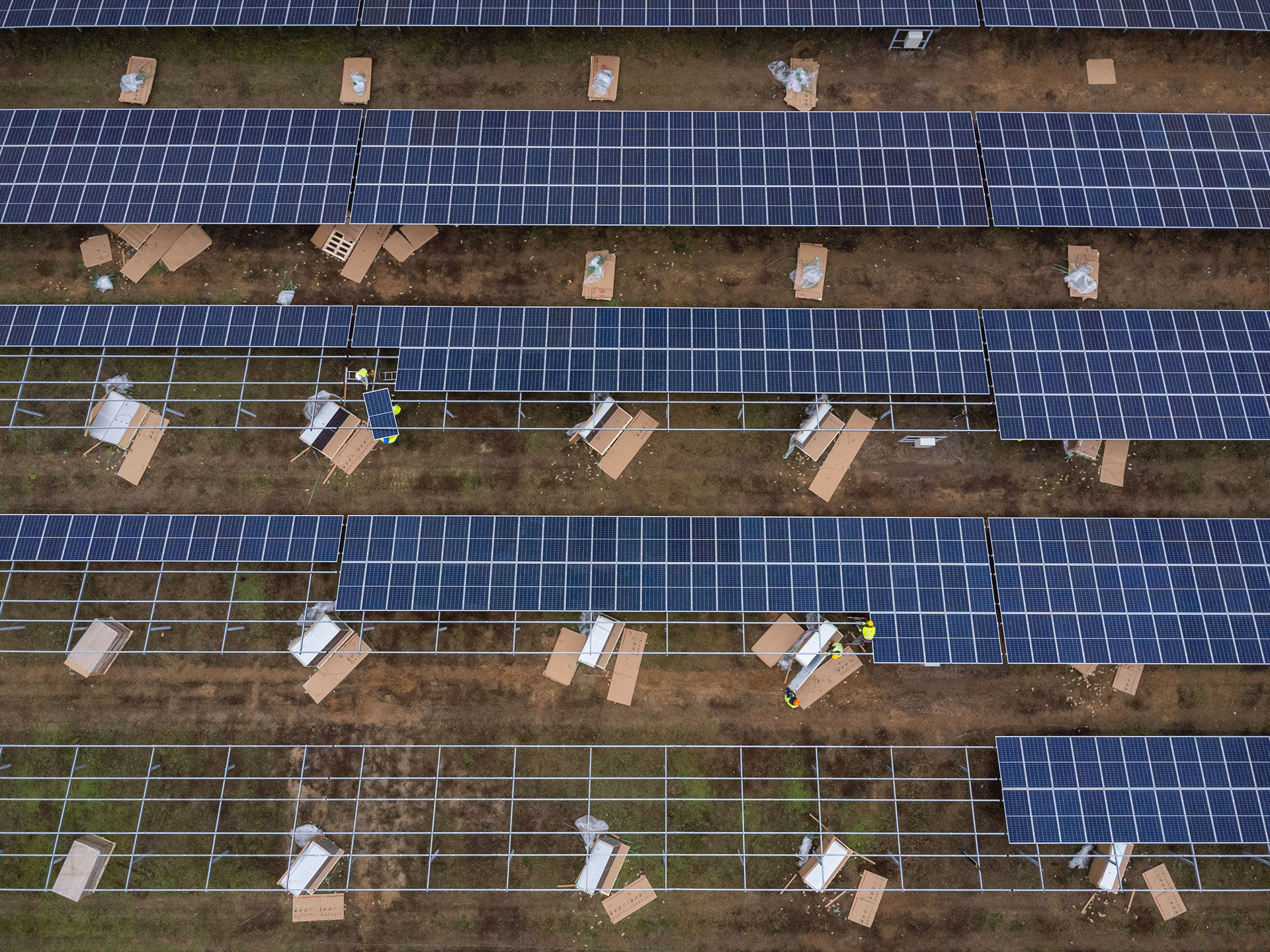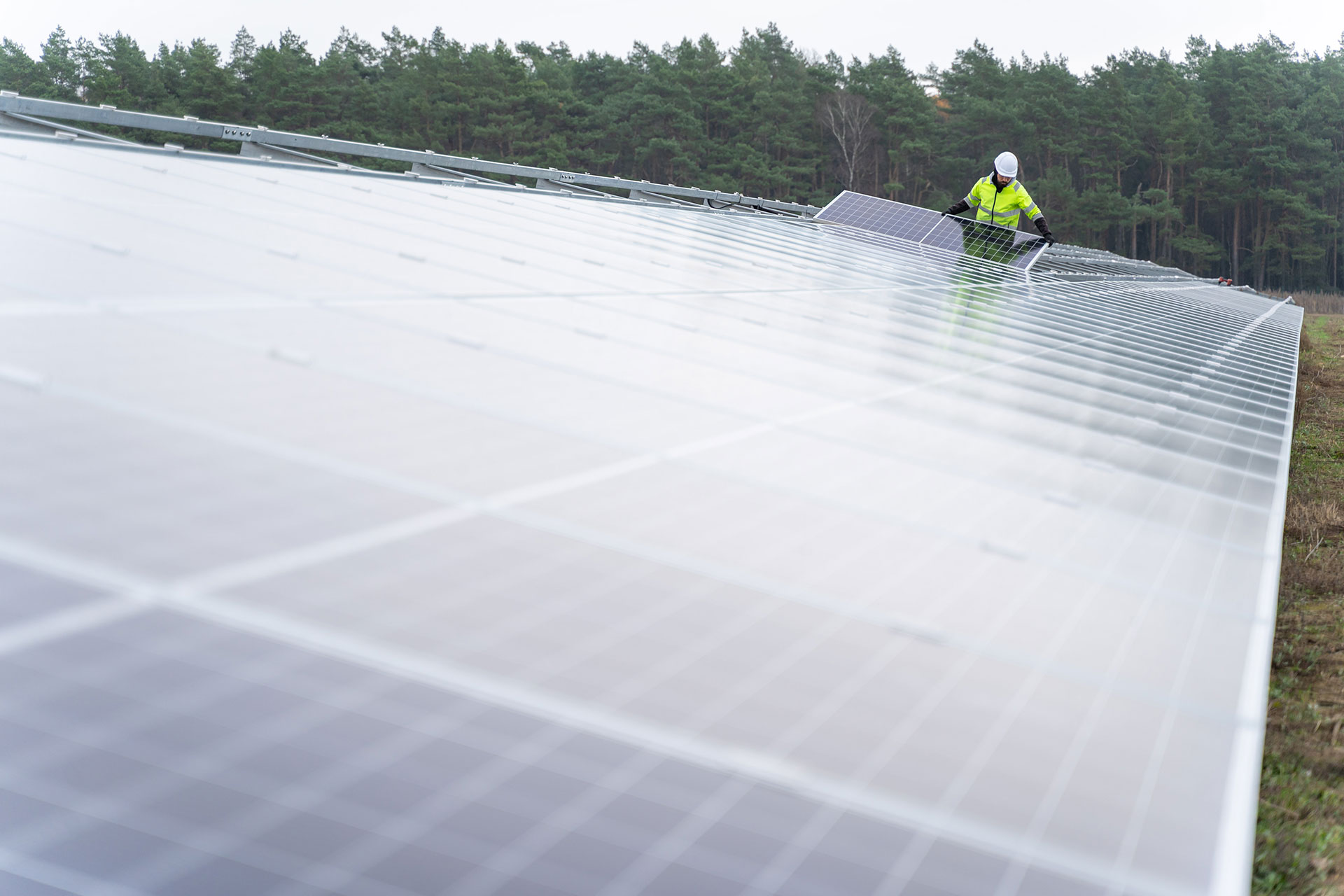A closer look at climate and costs
If you fly from Berlin to the northwest and briefly look out of the window of the plane, you find yourself looking down on a blue surface, glittering like a lake and embedded in the landscape. But at second glance, it is clearly not one of the region’s many bodies of water – but rather nearly 420,000 solar modules. They certainly sparkle in the sun, but they don't reflect light the way the surface of a lake does. On the contrary, they absorb a great deal of light and transform it into electric energy. Freudenberg’s use of this “green” energy is bringing it closer to its goal of climate neutrality.
The video of the project partner Volkswagen impressively shows the dimensions of the largest PV park in Germany. (Source: Volkswagen)
The photovoltaic park in Tramm-Göthen, Mecklenburg, went online in the spring of 2022, and is the largest facility of its kind in Germany so far. About 172 megawatts of electricity will be produced annually on an area equivalent to 347 soccer fields. A commitment from Freudenberg and automaker Volkswagen has cleared the way for the financing of the huge project. They have agreed to buy all the electricity that it generates over the next 10 years. “When projects of this kind are backed by financially strong companies like us or VW, operators can get good credit terms on construction financing,” said Martin Skrobisch, Head of Energy Purchasing for the Freudenberg Group.

A construction diary provides insights into the realization of the huge project. (Photo: Volkswagen)
Answers to the climate and energy crises
Skrobisch, who has worked for Freudenberg for more than 10 years, knows all about energy. With the climate crisis drawing attention as the world’s major societal challenge and the cost of energy making life more expensive in every area, his expertise is especially valuable. In these times, green energy is considered a miracle weapon against climate change as well as a technology promoting independence from oil and gas. In other words, it offers answers to both the climate and energy crises.
Martin Skrobisch, Head of Energy Purchasing, and Dr. Bilguun Bayarmagnai, Head of Corporate Sustainability, discussing the Freudenberg Group’s green energy strategy.
Please activate subtitles
Skrobisch took over management of the internal project “Purchase Green Energy” in 2020. The goal – as the name implies – is to increase the share of green electricity in the Freudenberg energy mix, in the best case to 100 percent. At 21 percent worldwide, the share is currently far below that. But the trend is steadily rising. The tool of choice for sourcing green energy is the so-called “power purchase agreement,” or PPA. One example is the company’s contract with electricity marketer RWE for purchases from Tramm-Göthen. Freudenberg already covers five percent of its global energy needs with green electricity from PPAs. Skrobisch and his team continually monitor the global electricity market so they can supply the Group’s sites reliably and for the long term. They match the needs of Freudenberg facilities with attractive construction projects that will generate solar, wind or waterpower.
of Freudenberg’s total energy consumption needs are already met by green electricity
(as of 2021)
of green electricity comes from power purchase agreements (status: 2021)
electricity costs saved by the company of the power purchase agreements concluded so far over a ten-year term (status: 2021)
But the demand for green electricity, especially in Europe and America, and increasingly in other parts of the world, greatly exceeds supply, Skrobisch said. When an attractive project comes along, it is important to seize the opportunity. “If you want to be green, you have to act fast,” Skrobisch said. That pays off doubly, he said, and then explained: “We have an advantage on costs, since our price for electricity is more geared to production costs than to fast-rising market prices. The price of electricity is also fixed for the normal contract period of 10 years, so it is not subject to the fluctuations typical of the energy market.” Skrobisch puts the cost-savings from the PPAs in effect so far at 40 million euros. The other advantage is even more significant, Skrobisch said. “We take climate protection seriously. With PPAs, we can achieve our climate-protection goals while contributing to the decarbonization of industry and the expansion of renewable energy in general.”
With PPAs, we can achieve our climate-protection goals while contributing to the decarbonization of industry and the expansion of renewable energy in general.
Martin Skrobisch, Head of Energy Purchasing

Almost complete: The PV park in Tramm-Göthen now supplies enough electricity to cover the annual needs of around 50,000 households. (Photo: Volkswagen)